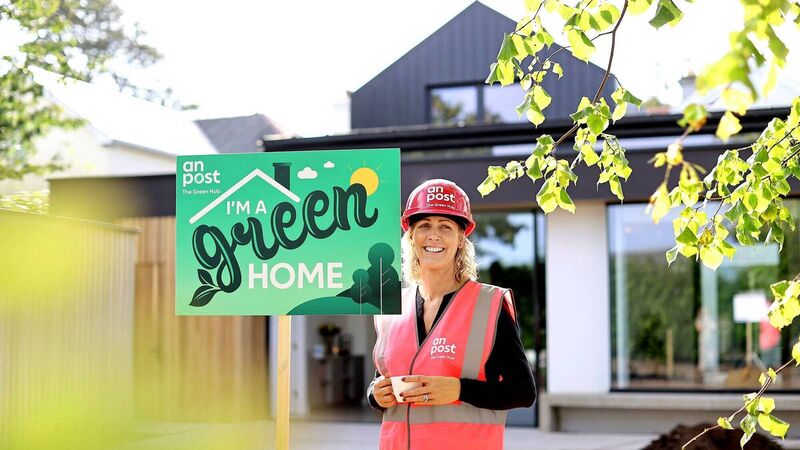Budgeting for your home upgrade

An Post
So far in this series, we’ve looked at the best ways to upgrade your home for cost-efficient and more sustainable heating and insulation, with a variety of solutions that you can pick and choose from to find the best upgrade for your home. Today, I’m looking at how much these solutions typically cost, so that you can establish what works best within your budget. The Green Hub from An Post can provide expert, tailored advice on the solutions that work best for your home, advice on financing, and arranging the right people for the job.
The Green Hub from An Post is a one-stop-shop for all of your home upgrade needs. The Green Hub offers a free survey of your home, taking into consideration the existing building specification, insulation, potential issues, and existing heating and water systems to help you find the right solution. Following the survey, the Green Hub advises on costs, SEAI grant eligibility, timelines, and will project manage your energy upgrade from start to finish.
On the Green Hub website, you can also use the BER energy-efficient tool to get quick home recommendations, such as the likely costs to upgrades and their potential energy savings based on your home’s BER rating.
The Green Hub from An Post is the best place to start when you’re considering home upgrades, and is particularly useful for those with little knowledge of home energy upgrades, enabling them to make the right decisions for their homes.
Because every home is different in scale, size, complexity, and access, budgets will also vary. This article is a simple guide on the expected costs of your upgrade.
Considering replacing the windows in your home can seem daunting because there are so many types available on the market, ranging from UPV and hardwood to Aluclad and aluminium. The ballpark cost for a four-bedroom semi-detached home typically ranges from €15,000 to €35,000. The Green Hub from An Post can source and project manage contractors for you, taking the stress out of the project. Remember, when you replace your windows, you’ll also need to paint reveals and window boards once the work is complete.
The easiest option to upgrade insulation in an accessible attic is adding a small outlay. This typically ranges from €4,000 to €8,000 and can be added to existing insulation, with the aim of creating 400mm of depth in total.
Upgrading internal dry lining is more expensive, usually varying from €15,000 to €20,000, and requires adjustments to any sockets, switches or decorations on the walls. New floor finishes may also be required.
Adding external wall insulation is usually the most expensive option, ranging from €30,000 to €45,000. This covers the adjustment of downpipes and new lightweight window sills.
To insulate under the ground floor of your home, including adding a new concrete slab, insulation, and membrane, typically costs somewhere in the region of €20,000 to €25,000. Lifting the floorboards and insulating between floor joists is a more affordable option, costing in the region of €12,000 to €15,000. Costs and decisions are all dependent on the ground floor area.
Replacing a standard boiler with a higher energy-efficient boiler usually costs around €4,000, assuming that all existing pipework is in good condition. To replace radiators, allow an additional €4,000 to €5,000. If you decide to replace your radiators, there may be some decoration required post-installation.
Although more economical to run, a heat pump is more costly to install. Allow a supply and install cost of €10,000. To upgrade to lower temperature radiators, allow an additional €4,000 to €5,000. As noted above, when replacing radiators, there may be some decoration required post-installation.
To infill an open fire and install a wood-burning stove and flue liner, depending on specification and length of flue (chimney stack), this will usually cost anything from €3,000 to €8,000.
The installation of a fire genie should be simple and effective immediately. This costs €300 to €400.
Pay for some of the upgrade work using SEAI home energy grants and through the Green Hub, SSE Airtricity will provide you with an additional discount for your carbon credit savings.
These costs are budget estimates including VAT, designed to give you an idea of the spending required to adopt one or all of the solutions I have suggested. Every home is different. To get a clear indication of what the costs might be for your home, you’ll need to get your home assessed. You can use the BER energy efficiency calculator on the Green Hub website and book a free home assessment, conducted in partnership with SSE Airtricity.








